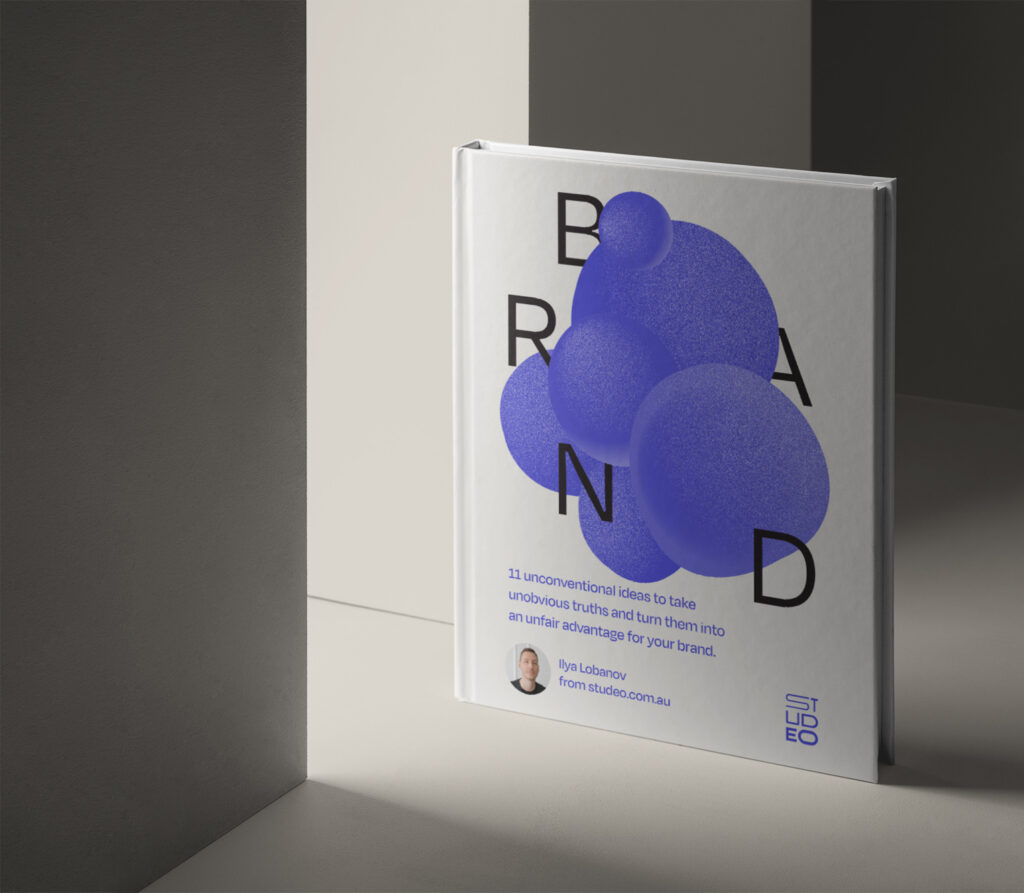Conducting a Strategic Brand Workshop

Imagine looking for car insurance.
You go to one website. And then another. All offering ‘competitive’ prices based on your circumstances.
But when push comes to shove, all you get is an online questionnaire to fill out. And only to get a quote that isn’t really tailored to you at all – beyond knowing your age, gender, and occupation.
Now imagine another car insurance where the sales representative takes the time to talk about your specific car usage. And in the process, discovers that you only drive your Alfa on the weekend to enjoy a nice picnic in the park. And then not only providing the right cover for you based on that info, removing all the unnecessary ‘default’ options but also throwing in a free car wash voucher for your weekend trips.
Now apply that analogy to brand building, and you will realise the importance of going beyond a questionnaire when learning about the goals of a business, likes/dislikes, the big vision, and more.
And so it bewilders me there are plenty of brand consultants (even established ones) who still send questionnaires to their clients.
The comfort of the known
If the questionnaire process works for you to generate the type of work that you enjoy doing and the benefits of sticking to it outweigh the disadvantages, then you do you.
If, on the other hand, you’d like to add something more to your clients in terms of business clarity, then consider adding a Strategic Brand Workshop to your design process.
If you want to improve the success rate of your design work and to build better relationships with clients, that is. And also to start thinking about those client projects more holistically. Not just from a layout and colours point of view but also how your recommendations may impact their business and the overall goals of their brand.
This article will demystify the strategic workshop process and empower you to run your projects more strategically and confidently.
The discomfort of uncertainty
Before I dive into some of the practical things you can implement to run a workshop, let me dispel some of the myths and some of your fears that may be preventing you from taking the first step.
You can’t communicate the value of a workshop to your clients.
Even just going through the workshop alone (without preparing a subsequent Strategy Roadmap or Strategic Documents of any kind) can already add tremendous value to the client in the form of insights, things they haven’t thought about, additional perspectives about their business from an outsider, more clarity and focus of what they’d like to achieve.
You don’t feel qualified to run a strategic workshop.
You don’t need a degree, and you don’t need to offer full-blown strategy service from the get-go. You can even call it a Discovery Workshop, and work your way up to more ‘advanced’ workshops as you learn from experience and your confidence grows. And remember brand strategy ≠ business strategy. You’re not there to overhaul their business from the ground up, you’re there to help their branding.
You don’t have a framework of exercises or questions to ask.
Many of the strategists I’ve interviewed, worked with, or studied have created their own frameworks the same way you can – by sourcing tools from other strategists who share theirs online, and then adjusting it through client feedback and to suit their own style.
You simply don’t know how or where to begin.
How would you teach someone to make an omelet? You’d introduce the ingredients. Then explain the method to prepare it. Then go through the steps together to actually prepare it. For workshops – start with your set exercises or questions you need to ask, then give your clients an overview of those ingredients, and then go through each exercise to help them uncover the insights (preparing the omelet).
You’re worried that you won’t find a solution.
You don’t need to have all the answers or the answer to their problem. You’re not an expert in every industry and within every context. Your job is to help your clients uncover the insights they already have, and then use your best judgment to offer your recommendations of what they could do with that info to get them where they want to go. Not even Steve Jobs could predict what the market needs or what the correct way to market something is every time – so take the pressure off yourself.
Before you dive into a brand workshop
Before I conduct any workshops, I will discuss the goals and expectations of my client on a discovery call.
This is something I may revisit during one of the Workshop exercises, but I like to understand my client’s expectations at the outset because that gives me more clarity around how I need to design my workshop.
Here are some questions that can help you set the conversation going – here’s a tip, rather than memorising them and robotically going through them, try to keep the conversation organic – moving to different questions when appropriate and relevant during that initial call.
- Tell me about the big vision for your business
- How are you different from your key competitor
- How would you like customers to describe you
- What makes repeat customers come back
- What common reasons for them not returning
- Name 3 or 4 things that describe your culture
- What do you do better than any competitor
If your client hesitates to answer any of the above or gives you generic or vague answers, that can signal that you need to help them bridge that gap in the workshop.
So while many of my exercises in my workshops are set in stone, I do customise them to suit the desired outcomes based on the specific goals of the project and client.
For example, while I do run through a customer personas exercise with each client, if I learn that a big goal is about converting better online, for example, I will add more UX specific exercises, more prompts to talk about the Customer Journey, more discussions around the Competitors Websites or apps specifically.
What’s the perfect outcome of a strategic brand workshop?
Running a Strategic Brand Workshop doesn’t have to be complicated.
Your core aim of the workshop should be about helping your clients to uncover golden nuggets and insights about their business.
They already have these insights, but they don’t always know that they do.
And you don’t need fancy exercises to run them.
I’ve worked with and studied Strategists whose frameworks and exercises don’t go beyond asking a few cleverly worded, pointy questions, and asking participants to ideate the answers.
So don’t get bogged down with trying to be ‘too clever’ with what you will do during the workshop. So long as you can find a way to get those insights, you’re golden.
The insights I seek to gather can be grouped into these three main areas:
What
Currently, what does the business have and do, how does it do it, and what is it trying to achieve or overcome?
So what
What’s the challenges’ impact, what should change, why should customers care?
Now what
What market gaps opportunities can be explored, what will the action steps, priorities, and the brand’s positioning be?
The basic brand workshop framework
Based on the initial conversation you’ve had with the client, you should have a general idea of what is required and what the key goals are, and you can start thinking about which of the exercises will be most beneficial and which you may need to adjust.
The basic structure and exercises that I conduct fall under the following categories:
Company – In any communication, we tend to assume that we know what somebody else means but in fact we often misinterpret. So in the first set of exercises, I get all the stakeholders to provide some basic definitions about their business. Describing what the business currently does, what it has (expertise, services, products, process, people), and how it does it. This is a great opportunity to provide all the partners and key members of the business to get on the same page.
Values – Next, we establish some foundational pillars for the brand, something they can stand behind as a brand. So the following set of exercises is typically concerned with what matters to the business and key members, and how they will do what they do. These will become their guiding principles for their brand’s behaviour and culture.
Customers – We then take a deep look at their ideal customers and those they can help as a business. Because as we know, without customers there isn’t really a business. These exercises are designed to uncover insights about who the business will serve, what their customers need, how the business will serve them, and why should they care about the brand and choose them over competitors. I tend to use my MAGIC framework to help prompt the right discussions.
Personality – How will the business show up in the world, what will it look and feel like, what will it sound like? This is what the personality exercises are chiefly concerned with. This is important, as it will help you as a brand consultant define the communication style for the brand. And it will serve as a way for the business to validate any of their future marketing communications.
Competition – Not forgetting of course that the business exists in the context of other competitors, we run through a set of exercises trying to spot a market gap and determine the recommended strategic approach. Do some of the competitors already strongly ‘own’ a particular colour, shape, another distinctive brand asset, like tagline or idea? How do they position their offerings? How can you differentiate sufficiently?
Purpose – Last but not least, we need to start putting all of the exercises together into something more actionable and concrete. What does the business stand for, what drives it to meet the customers’ needs?
Final thoughts on running a brand workshop
At the end of the Workshop, it’s a good idea to provide a short overview of the exercises you’ve completed and ask for any feedback. You can uncover additional golden nuggets when the participants start to share their realisations, shifts of mindset, and other interesting insights.
From there, the typical next phase is the delivery of a Strategic Document where I collate all of the findings, undergo additional research, validation of assumptions made in the workshop, undergo further competitor analysis into their positioning if any, and basically fill any missing gaps.
All of which I then distill into succinct summaries, outlining any insights, observations, as well as, very importantly, recommendations and possible ways to implement or utilise those findings in some actionable way.
For example for the Customer Personas, I might provide copy examples for each key persona, potential ways to target them based on their Customer Journey and any do’s and don’ts regarding engaging with them in general, based on the insights collected.
With any Brand Strategic work, the danger is creating an inspiring PDF file presentation with lots of moving and clever findings and insights. But unless you provide some tangible and actionable ways how those insights can be applied, that PDF file will just end up collecting dust in someone’s inbox.
So do document the insights, but aim to then fit all of the key insights onto one brand page, with key takeaways for each.
Have you changed your mind about running brand workshops? Let me know.
Enjoyed this article?
If you found this article insightful, consider joining me and other strategic creatives in our closed membership called Startegists, where we help each other turn inaction into action. I teach members how to design and run these types of workshops in more detail, and more. You can learn more here.
